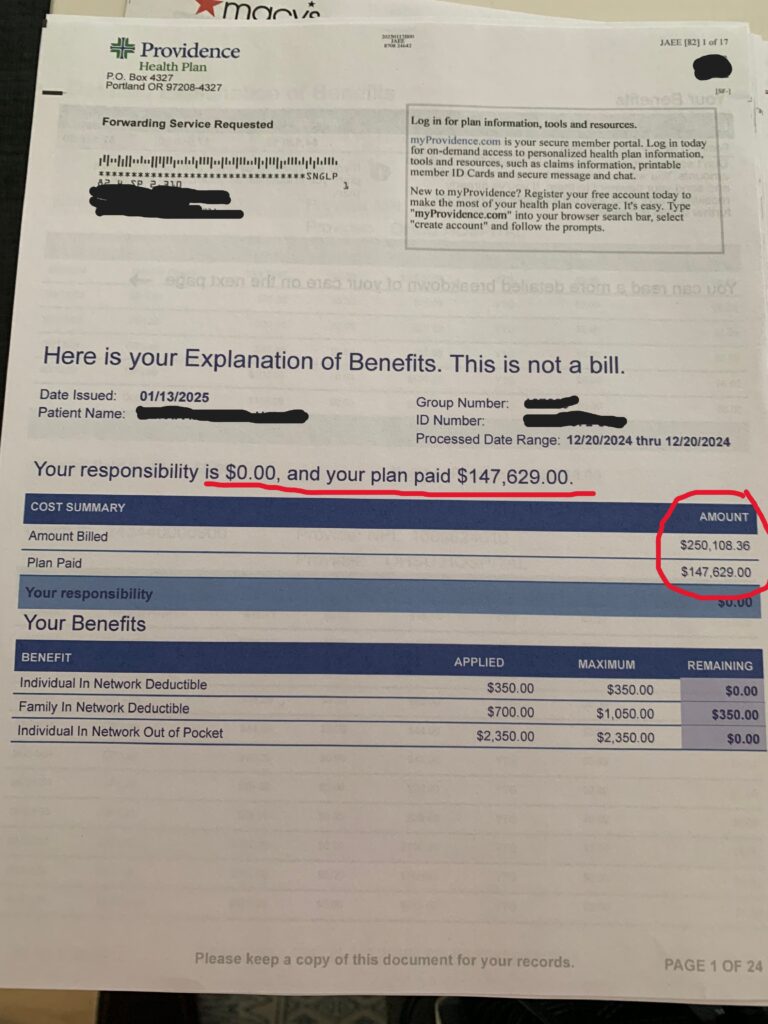I anticipate being brief today because a picture is worth a thousand words. I believe that I mentioned this earlier last year, but for the sake of clarity: a stem cell transplant would not be performed without insurance approval. That was all pre-approved before we went through all of this last summer.

I brought it up, so I might as well give a quick overview for context purposes. My wife had an Autologous Stem Cell Transplant. This is the most common form put into practice (I have to admit that I don’t know much about the other types). The theory is that the oncologist is going to kill the cancer first, like a first time diagnosis. If that goes well, then you go through the transplant process.
This consists of high dose chemotherapy, harvesting your own stem cells, then putting them back into you when the high dose chemo is complete. The purpose would be to reboot your own immune system. This is accomplished by getting good stem cells post chemotherapy, killing everything and then starting over with the good cells. The autologous part means that you are the donor for the stem cells. I have to believe that other types use different donors, but not 100% sure.
While the process is fairly effective, the risk is not from the procedure itself but the secondary effects. Those would be infection due to lack of immune system, stroke from high blood pressure from all of the medications, dehydration from side effects and failure to thrive through eating, drinking and mobility.
It is imperative to be near the treatment center with high dose chemotherapy. Some sessions took up to six hours to complete. By the time it is over, the requisite hospital stay of 7-10 days is required and if you went through it you would agree. After that, the follow-up treatment is pretty minimal. Our staying in Portland was a function of how far we lived from the treatment center (a requirement). To be honest, I am glad that we did.
When you look through the pages and pages of the Explanation of Benefits (EOB) statement, you would see all of the activities for this event. This is not the total cost but it is pretty close. You have lodging fees, plus food and incidentals. In our case, the lodging was reimbursable so that was net zero. The only additional cost really was the convenience food or unconventional packaging.
I thought that it might be interesting to show what a major medical event would actually cost. I know that one day we will probably all have one but unless you are actively caring for someone you don’t get an opportunity to really understand this. I found it interesting anyway.
End Your Programming Routine: OK, I am going to leave cancer for good (unless it comes back). I want to count my blessings that it has been a stable and calm six months. I am doubly thankful that insurance covered the process completely and disability handled the loss of income. If you have to go through this, it couldn’t have been much better than this. God must be looking out for us which means there has to be a greater purpose from this event. I will keep my eyes open.
Recent Comments